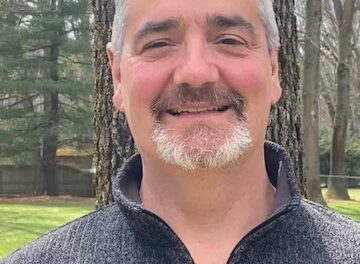Commentary: By Robert Michaels, a toxicologist with RAM TRAC Corporation in Schenectady, and Uriel Oko, an engineer with Recycle Management in Glenmont. (Both are subscribers to THE JEWISH WORLD.)
 The choice of dredging method removed only a fraction of the contaminants, and the EPA’s monitoring of progress has been insufficient.
The choice of dredging method removed only a fraction of the contaminants, and the EPA’s monitoring of progress has been insufficient.
Dec 8, 2023 — TIMES UNION
Dredgers at work in the Hudson River near Fort Edward on July 26, 2011. Photo provided by Robert Michaels
In 2005, the U.S. Environmental Protection Agency mandated that the General Electric Company dredge about 40 miles of the Hudson River between Fort Edward and Troy because of a persistent trickle of PCBs into the river. Today the EPA is readying its latest assessment of river recovery, some 15 years after dredging. It’s an opportune time to note that the dredging further damaged the river and set back its recovery.
GE’s consent decree with EPA left open the choice of dredging method. GE chose clamshell dredging, which is cheaper than hydraulic dredging. However, such dredging disturbs the river bottom, sending massive amounts of PCB-contaminated sediment downstream.
In 2007, in a peer-reviewed article, we predicted the inevitable failure of clamshell dredging. Our follow-up articles in 2010 and 2017 documented its actual failure.
During on-site visits, we observed black, sediment-laden water pouring from partially closed dredge buckets suspended over the river surface. Dredge spoils often included construction debris and other large objects such as tree stumps, bicycles, cement blocks and boulders. Such objects prevented buckets from closing tightly and securing their contents. Further, dredge buckets weighing tons repeatedly pounded the river bottom. As each bucket closed, its walls created severe turbulence that mobilized dense clouds of resuspended sediment.
We used dredge bucket sizes and the EPA’s computerized “bucket files,” which recorded each dredge bucket descent and sediment lift, to quantify the fraction of dredged material that was placed into waiting barges. We found that some 75 to 80 percent of the material entering buckets fell back to the river. That is, the amount dumped into waiting barges was only about a quarter of the amount dredged. Moreover, this estimate is conservative because it omits the sediment mobilized by the dredging.
To document dredging success, the EPA required intensive environmental monitoring, but it was not intensive enough. It severely undercounted mobilized PCB-contaminated sediment and PCBs in the air. EPA knew that its dredging success criteria were being contravened, but instead of acknowledging failure, EPA weakened the criteria used to rate success.
Instead of measuring mobilized sediment directly, EPA had GE measure “resuspended” sediments, which means just the small fraction of mobilized sediment that enters the water column. Most is left alone, resting on the bottom, but there it is loose and still mobile due to river currents and storms.
EPA initially required resuspension to be within 1 percent of the total dredged, but this limit was routinely exceeded. So EPA doubled the limit to be within 2 percent. EPA also had the measurement taken 1,000 meters upstream of the dredge site instead of at the “dredge head.” Of course, the river flows downstream, so the separation of dredging from measuring allowed much of the mobilized sediment to drop back to the river bottom, out of the reach of samplers.
Meanwhile, the river and storms have moved PCB-containing sediment along the river bottom.
PCBs have entered the river ecosystem in both flora and fauna, including fish. Fish are consumed by predators like birds, which spread the chemicals beyond the river. People catch fish for sport and, often, consumption. PCB levels in the ecosystem including fish are unlikely to decline to acceptable levels for generations.
We support environmentally friendly dredging methods that minimize PCB mobilization, such as coffer damming and hydraulic dredging. Coffer damming walls off riverbed sections to remove water so excavators can dig up and remove exposed sediments. Hydraulic dredging, in contrast, captures nearly all contaminated sediment by vacuuming it off the riverbed directly into barges. Hydraulic dredging has become the norm for environmental dredging. Clamshell dredging, in contrast, is dirty – so dirty that it usually is reserved for reopening navigation channels.
Use of clamshells for dredging PCB-contaminated Hudson River sediments was an unwise decision. Clamshell dredging did not improve the river, but instead, further damaged it. If environmental groups wish to have EPA impose further PCB dredging responsibilities on GE, clamshells should be off the table.







